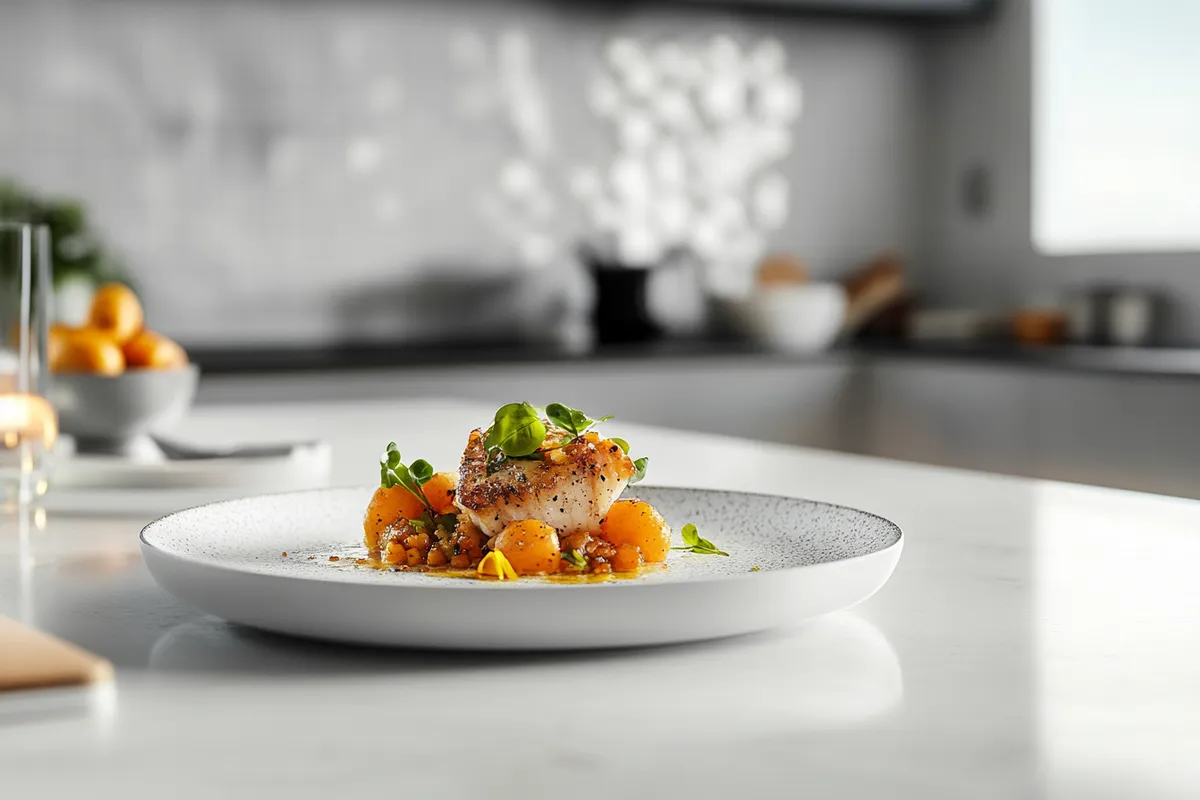There’s something magical about the aroma of a hearty dish wafting through your kitchen, instantly conjuring up feelings of comfort and nostalgia. In this article, we will explore the delightful world of a classic recipe that has transcended generations, perfect for family gatherings or cozy evenings at home. You’ll find endless possibilities with this dish, allowing you to let your creativity shine. Want to spice it up? Consider adding a hint of smoky paprika or fresh herbs for an unexpected twist.
For those looking to cater to diverse palates, this recipe easily adapts to accommodate vegetarian, vegan, or gluten-free diets without sacrificing flavor. To ensure your culinary creation is perfected, remember to pay attention to the cooking times and temperature—small details that can elevate your dish from satisfying to simply unforgettable. Dive into this journey of flavors, and let’s embark on creating something truly special!
Ingredients for Beef Stroganoff:
Meat and Base
- 2 pounds of beef sirloin, cut into thin strips
- 1 large onion, finely chopped
- 3 cloves of garlic, minced
- 1 cup of beef broth
- 1 tablespoon of Worcestershire sauce
- 2 tablespoons of Dijon mustard
Mushrooms and Vegetables
- 1 pound of fresh mushrooms, sliced (button or cremini mushrooms work best)
- 1 cup of sour cream (you can substitute with Greek yogurt for a healthier twist)
- 2 tablespoons of all-purpose flour (optional, for thickening)
- 2 tablespoons of olive oil or unsalted butter for sautéing
Seasonings and Garnishes
- 1 teaspoon of salt, adjust to taste
- 1 teaspoon of black pepper, freshly ground
- 1 teaspoon of paprika for color and flavor
- Fresh parsley, chopped, for garnish (optional)
- 1 teaspoon of dried thyme or mixed Italian herbs (optional for extra flavor)
Pasta and Accompaniments
- 12 ounces of egg noodles or pasta of your choice (you can also use rice or mashed potatoes)
- 1 tablespoon of lemon juice (adds brightness to the dish)
Variations and Alternative Ingredients
For a more interesting flavor profile, consider the following variations:
- Swap beef for chicken or turkey for a lighter option.
- Add a splash of white wine before deglazing the pan with broth to enhance the richness.
- Incorporate vegetables like bell peppers or spinach for added nutrition and color.
- For a spicy kick, add red pepper flakes or a dash of hot sauce.
Each ingredient plays a critical role in achieving the rich, creamy flavor typical of a traditional beef stroganoff, making this dish not only satisfying but also versatile for various palates.

How to prepare:
Making a delicious dish can be a rewarding experience. Follow these clear and easy steps to create a masterpiece in your kitchen!
Gather Your Ingredients
Start by assembling all the ingredients you will need. Check your recipe for specifics. Common ingredients might include fresh vegetables, spices, proteins, and fats. Ensure everything is measured and ready to go.
Prep Your Work Area
Clean your countertops and ensure your cooking surfaces are tidy. Lay out all your tools, such as knives, cutting boards, and mixing bowls, making them easily accessible. This organization will streamline your cooking process.
Chop Your Vegetables
Begin by washing all your vegetables thoroughly under running water. Next, peel them if necessary and chop them into uniform pieces to ensure even cooking. Place the chopped vegetables into a bowl to keep them separate.
Season Your Proteins
If your recipe calls for any proteins like chicken or tofu, take this time to season them. Use spices such as salt, pepper, garlic powder, or herbs. This step adds flavor to your dish. Let the proteins sit for a few minutes to absorb the seasoning.
Heat Your Cooking Vessel
Select a suitable pot or pan for your cooking needs. Add a bit of oil to the pan and heat it over medium heat until it shimmers. This will help prevent sticking and add flavor.
Add Your Proteins
Once the pan is hot, add your seasoned proteins. Allow them to sear without moving them around for a few minutes. This will give them a nice golden crust. Then, turn them over and cook until fully done, following the recipe’s time guidelines.
Add Vegetables
Now, it’s time to introduce the chopped vegetables to the pan. Stir them well to combine with the proteins. Cook the mixture until the vegetables soften, about 5 to 7 minutes. Adjust the heat as necessary to prevent burning.
Incorporate Broths or Sauces
If your recipe requires a broth or sauce, pour it into the mixture at this stage. Stir everything gently to combine again. Allow the ingredients to simmer together, letting the flavors meld. Adjust seasoning if needed.
Finish and Serve
After simmering, remove the pan from heat. Plate your dish and serve immediately. Garnish with fresh herbs if desired, adding a pop of color and flavor to your beautifully prepared dish.
Tips for the Perfect Dish
Maintain the Right Temperature
To achieve the best results, always start by ensuring that your cooking surface, whether it’s an oven, stovetop, or grill, is at the correct temperature. Preheating your oven before baking is crucial; it allows dishes to cook evenly. Use an oven thermometer to check if your oven’s actual temperature matches the set temperature. For stovetop cooking, medium to medium-high heat is often ideal for sautéing and frying. Remember, a hot pan will help create a nice sear, locking in flavors and moisture.
Use Quality Ingredients
The quality of your ingredients plays a pivotal role in the dish’s final outcome. Choose fresh herbs, ripe vegetables, and high-quality proteins for the best flavors. Organic produce can enhance the taste and nutrition of your dish. Spend some time finding reliable suppliers for meats and seafood. If possible, visit local farmers’ markets where you can buy seasonal produce. Fresh ingredients not only taste better but also contribute to a healthier meal.
Suitable Substitutions for Dietary Restrictions
Catering to various dietary restrictions can be easy if you know the right alternatives. For those avoiding gluten, use almond flour or gluten-free all-purpose flour in place of regular flour. If someone is dairy-free, coconut milk or almond milk can be excellent substitutes for cream. For a vegetarian option, substitute meat with tofu, tempeh, or legumes. Always taste as you go and adjust seasoning based on what you choose as a substitute.
Enhance Flavors with Seasoning
The right spices can turn a good dish into a great one. Don’t shy away from using herbs and spices; they can elevate your meal significantly. Experiment with combinations like rosemary and garlic for meats or basil and oregano for pizzas. Start by adding a pinch of salt and adjust according to taste. Remember, seasoning at different stages of cooking can also help layers of flavor develop more fully.
Presentation Matters
Don’t forget that we eat with our eyes first. A beautifully plated dish can make a significant difference. Use colorful ingredients to create contrast on the plate. Clean edges and garnishes like fresh herbs or a drizzle of sauce can elevate the overall presentation. Take that extra moment to arrange your food attractively; it enhances the dining experience and makes your creation all the more enjoyable.
Incorporating these tips will help you master this dish effectively and ensure that each bite is a delight.
Storage Tips for Fresh Produce:
Maintain Freshness with Proper Storage
To keep your fresh produce at its best, start by selecting high-quality items. Inspect fruits and vegetables for any bruises or blemishes. Store whole produce in the refrigerator to slow down the ripening process. For leafy greens, always wash them before storing, then wrap them in a damp paper towel. Place them in a perforated bag to let air circulate. This method helps retain their crispness for longer.
Optimal Storage Conditions
Different types of produce require varied storage conditions. Store apples away from other fruits to prevent them from ripening too quickly. Bananas emit ethylene gas, which speeds up ripening, so keep them separate from other fruits. Root vegetables like carrots and potatoes benefit from dark, cool places. Avoid sealing them in plastic; instead, use breathable bags or containers. Tomatoes taste best when kept at room temperature, far from direct sunlight.
Extending Shelf Life Efficiently
Check your produce regularly and remove any spoiled items. One bad apple can spoil the bunch! Use drawer organizers in your fridge to help separate fruits from vegetables. This segregation helps prevent the exchange of ethylene gas, preserving freshness. If you find fruits and veggies nearing their expiration, think about cooking or freezing them instead. Blanch vegetables before freezing to lock in flavor and nutrients.
Smart Storage for Herbs and Greens
Fresh herbs need special care. Place them in a jar with water like a bouquet, covering the leaves with a plastic bag. Store them in the fridge for longer freshness. Alternatively, chop herbs and freeze them in ice trays filled with olive oil. This approach allows you to incorporate them into dishes smoothly. Keep greens in airtight containers with a paper towel to absorb excess moisture.
By following these storage tips, you enhance the life of your fresh produce. These practices ensure you enjoy longer-lasting flavor and nutrition in your meals.
Related Recipes
Exploring similar dishes can enhance your culinary journey and elevate your dining experiences. Here are some recipes that beautifully complement the flavors found in your dish.
- Garlic Butter ShrimpThis dish features succulent shrimp cooked in a rich garlic butter sauce, much like the savory flavors you appreciate. The combination of garlic and butter creates a luxurious sauce that pairs similarly with complimentary starches like rice or pasta.
- Herb Roasted PotatoesThese crispy potatoes, seasoned with fresh herbs, balance the rich flavors of your main ingredient. The use of herbs offers a refreshing compliment, enhancing the overall harmony of your meal while providing a satisfying texture contrast.
- Grilled Vegetable MedleyA colorful mix of grilled vegetables can add a vibrant touch to your table. The smoky char from grilling brings out flavors reminiscent of your dish, while the variety of textures creates a wholesome side that truly satisfies.
- Caesar SaladThis classic salad, with its creamy dressing and crispy croutons, offers a refreshing contrast. The crunchiness of the lettuce and the savory Caesar flavor balance out heartier dishes remarkably well, making it a perfect accompaniment.
These related recipes share complementary flavors and textures, enhancing your overall meal. Each offers a unique twist while maintaining harmony with your main dish. Enjoy experimenting with these delightful combinations!
Certainly! Please provide the specific topic or subject for which you need the frequently asked questions section.
Conclusion:
In summary, this recipe embodies simplicity and versatility, making it an ideal choice for both novice and experienced cooks. Its core ingredients are easily accessible, allowing for quick preparation without sacrificing flavor. One of the standout features is its adaptability; you can effortlessly modify the recipe by adding your favorite proteins or seasonal vegetables, making it perfect for any occasion. Additionally, experimenting with different spices and herbs can elevate the dish to new heights, ensuring every serving is uniquely your own. By embracing this flexible approach, you not only create a delightful meal but also encourage creativity in the kitchen. With its easy steps and customization options, this recipe truly caters to varying tastes and dietary needs, proving that wholesome cooking can be both enjoyable and fulfilling. Dive into this culinary adventure with confidence, and make it your own!

